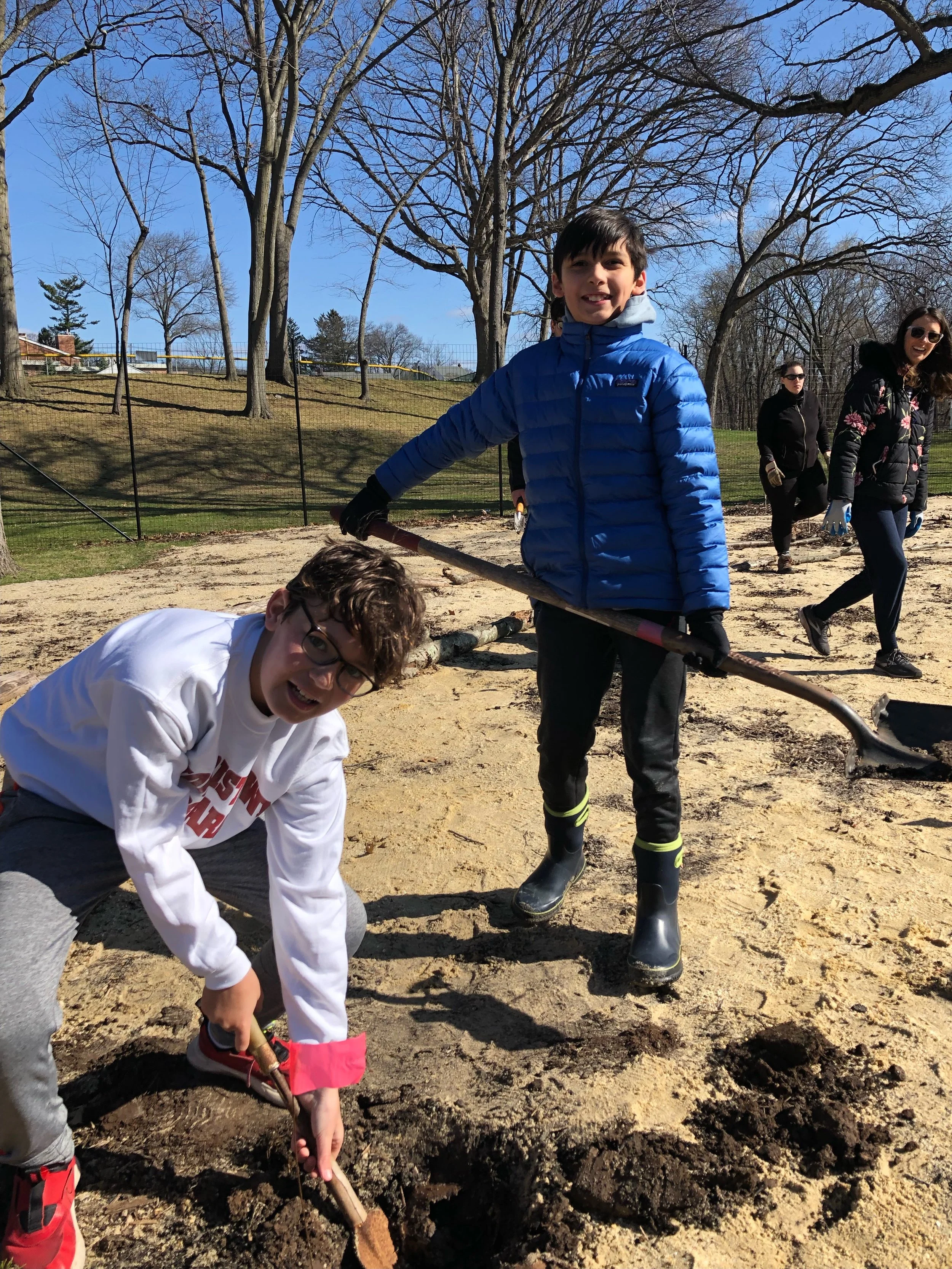From plants to trees to forests: forests are making headway in news
Summit, NJ community members plant a “Tiny Forest” on Apr 2, 2022. 625 native trees, shrubs, and wildflowers have been planted so far.
Dedication day for a mini-forest in Elizabeth, NJ, on Aug. 2, 2022. Left to right: Bette Jane Kowalski (Union County Freeholder); Dr. Daniela Shebitz (Kean University); Susan Haig (CivicStory Trustee); John Evangelista (Groundwork Elizabeth)
Darian Griffin stands next to a young tree in the mini-forest in Elizabeth, NJ
Forests are becoming news, and recent stories about the healing role of native trees and plants in Earth’s ecosystems have a common message: Plant many of them soon, in every community.
Take, for example, Chris Moody’s Sept. 25 Star-Ledger article entitled "The Rise and Beauty of the Native Plant." The full-page layout signaled that native plants have gained ground as a topic public interest. The story noted that indigenous plants are essential to the food web and human health. Plant species that evolved from the Carolinas to New England, before European colonists arrived, are vital food for the insects, birds, and wildlife that evolved with them. Without more "water-wise" plants and fewer imported, ornamental plants that need fertilizer and watering, nature's ecosystems will continue to degrade, so this is a topic of urgency and relevance to all readers.
The increasing variety of native plant species available at garden centers shows that more New Jerseyans are choosing to "shrink" their lawns and replace mowed grass with native plants, grasses, or shrubs. For non-gardeners like me, the learning curve has been steep. Growing up, I loved every minute of playing "catch" in the back yard, so it's taken time to grasp that too much lawn—and too few native plants and trees—are actually a threat to our health and safety everywhere.
Next came a beautiful "trees to forests" story filed from Nairobi, Kenya by NPR correspondent Eyder Peralta. Entitled "On little strips of land, Kenyans grow everything from roses to azaleas to gardenias" and aired on Morning Edition on Sept. 26, the story profiles George Jenga, whose roadside nursery has produced "hundreds of thousands" of tree seedlings over recent decades.
When searching for a job twenty years ago, Jenga headed to the forests on the edge of Nairobi and began collecting seeds, and created a livelihood that eventually financed his kids' schooling. While most plant sellers sell flowers, George Jenga's passion is native trees and their benefits. He patiently nurses seeds over one to two years into seedlings, which he sells, and enjoys seeing as saplings—and eventually flourishing trees—around his city.
As it happens, before these news pieces, I had just finished a fascinating and sobering book called The Treeline: The Last Forest and the Future of Life on Earth, by Ben Rawlence, on the world's boreal forests. I had to look up “boreal,” and found that it refers to the northern forest-tundra that is the world’s largest living system after the ocean, and the greatest planetary source of oxygen.
Taken together, the book and Moody’s and Peralta’s news stories offer a glimpse of the scale and ecological urgency of forests, which reach across the globe both geographically and societally—from vast expanses of wilderness to rural woodlands, suburban woodlots, and—most surprisingly—urban mini-forests that can be planted in schoolyards and vacant lots. Together these pieces shed new light on years of news reports we've received about deforestation that threatens the world's tropical rain forests.
Rather than collections of trees, forests are interconnected communities of trees, shrubs and plants. Their restorative powers and capacity to give life are enabled by the inter-relationships among diverse tree species working together both above and below ground. As Hannah Lewis points out in Mini-Forest Revolution (2022), "it is the interaction we cannot see that drives the ecological processes we value."
As forests continue to become news, many more of us will understand how changes in our climate system—far beyond human scale—can be addressed by each of us “working with nature” in our own communities, to bring healing and health to our towns and cities, yards and neighborhoods.




